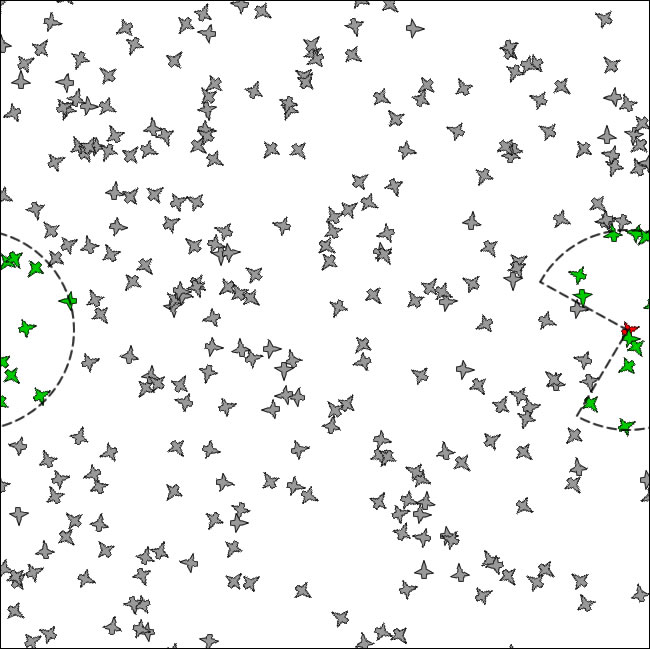- Multi-agent systems
- Designing Robot Swarms
- Robustness in Foraging E-puck Swarms Through Recruitment
- Information Flow Regulation in Preferentially Foraging Swarms
- The Information-Cost-Reward framework for understanding robot swarm foraging
- Behaviour-Data Relations Modelling Language For Multi-Robot Control Algorithms
- Task Allocation in Foraging Robot Swarms
- Information Flow Principles for Plasticity in Robot Swarms
- Understanding the Role of Recruitment in Robot Foraging
- Controlling Ant-Based Construction
- Boid Game-Playing through Randomised Movement
- Neural networks
- Robots
- Essays
[Boid Game-Playing through Randomised Movement]
Date: Oct 2012
 Technologies used: Java, JFreeChart, Model-View-Controller, Git
Technologies used: Java, JFreeChart, Model-View-Controller, Git
The original boid flocking algorithm is extended by adding randomised movement to the flock members.
This approach is a light-weight alternative to other ‘follow the leader’ techniques implemented in order to create a ‘game-playing’ behaviour during which a flock changes its movement direction as observed in real birds.



 Technologies used: Java, JFreeChart, Model-View-Controller, Git
Technologies used: Java, JFreeChart, Model-View-Controller, GitThe original boid flocking algorithm is extended by adding randomised movement to the flock members.
This approach is a light-weight alternative to other ‘follow the leader’ techniques implemented in order to create a ‘game-playing’ behaviour during which a flock changes its movement direction as observed in real birds.














{Please enable JavaScript in order to post comments}